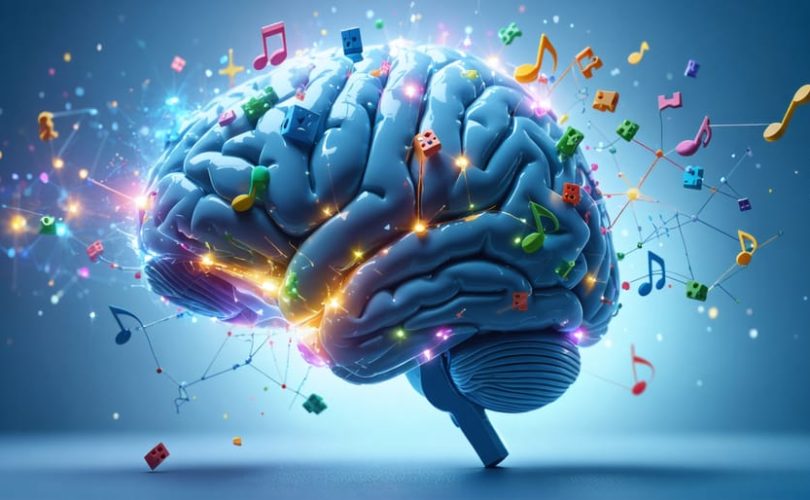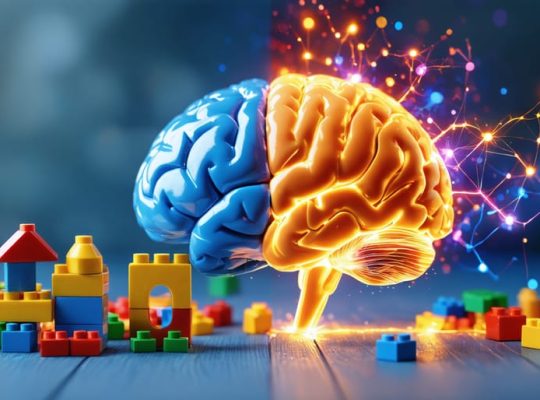Watch a child’s face light up during play, and you’re witnessing their brain in a state of explosive growth and development. Every peek-a-boo game, block tower, and imaginative adventure is actually a sophisticated neurological symphony, fine-tuning the architecture of your child’s developing mind.
Recent neuroscience research reveals that play isn’t just fun – it’s a biological necessity that shapes the brain’s neural pathways. When children engage in play, their brains release a cocktail of beneficial chemicals, including dopamine and oxytocin, while forming millions of new neural connections that strengthen learning, emotional regulation, and social skills.
What’s particularly fascinating is how different types of play activate distinct brain regions. Physical play enhances motor skills and spatial awareness, while pretend play strengthens executive function and emotional understanding. Even simple games like hide-and-seek help develop critical thinking and problem-solving abilities.
For parents and educators, understanding the neuroscience of play isn’t just academically interesting – it’s empowering. It validates what we instinctively know: that giving children time and space to play freely isn’t indulgent; it’s investing in their cognitive, emotional, and social development. In our increasingly structured world, protecting playtime isn’t just important – it’s essential for healthy brain development.
The Brain’s Play Network: Understanding the Neural Connections
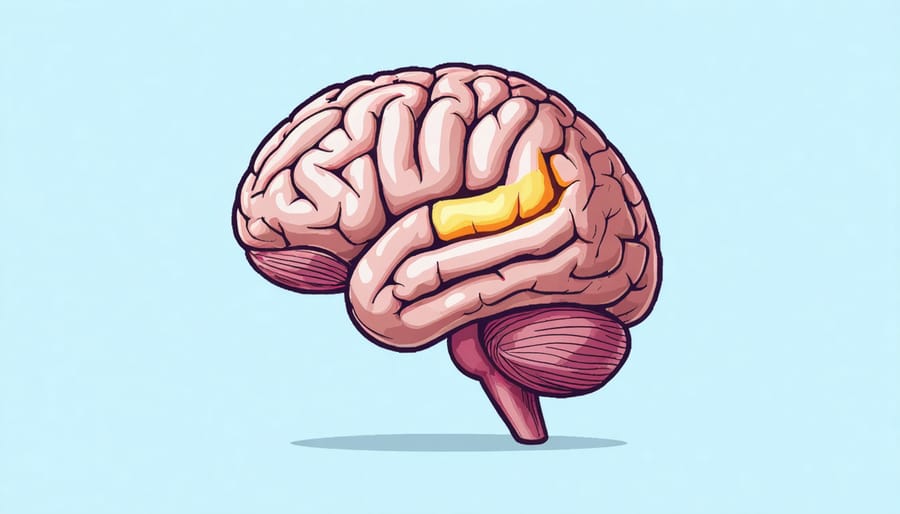
Key Brain Areas Activated During Play
When children engage in play, their entire brain lights up with activity, but certain regions play particularly important roles in making play both enjoyable and educational. The prefrontal cortex, often called our brain’s command center, becomes highly active during play, helping children plan their actions and solve problems creatively.
The amygdala and hippocampus work together to process emotions and create memories during play experiences. When a child builds with blocks or engages in pretend play, these areas help them remember what works well and associate positive feelings with learning new skills.
The cerebellum, traditionally known for coordinating movement, buzzes with activity during physical play. Whether a child is climbing, running, or dancing, this region helps them develop better balance and spatial awareness.
During social play, the temporal lobe becomes especially active, helping children understand and respond to their playmates’ emotions and actions. Meanwhile, the release of feel-good chemicals like dopamine and endorphins in the reward center makes play naturally rewarding and motivating.
Most fascinating is how these regions don’t work in isolation – they form complex networks that strengthen with each playful interaction. Dr. Sarah Thompson, a pediatric neurologist, explains, “When children play, they’re essentially creating a symphony in their brain, with different regions harmonizing to create lasting neural connections that support learning and development.”
How Play Strengthens Neural Pathways
Every time your child engages in play, they’re not just having fun – they’re actively building and strengthening vital neural pathways in their brain. Through play, children exercise their brain’s ability to form new connections, a remarkable process that shapes their cognitive development.
Think of these neural pathways like trails in a forest – the more frequently they’re used, the clearer and stronger they become. When children engage in imaginative play, solve puzzles, or participate in physical games, they’re essentially creating and reinforcing these neural trails. Dr. Sarah Thompson, a pediatric neurologist, explains, “Play activates multiple brain regions simultaneously, creating rich networks of neural connections that support learning, memory, and emotional regulation.”
Different types of play strengthen different neural pathways. Physical play enhances motor skills and spatial awareness, while pretend play develops emotional understanding and social skills. Building blocks and construction toys strengthen problem-solving circuits, and rhythmic activities like singing and dancing build language and memory pathways.
Parents often ask me how they can support this development. The answer is beautifully simple: give children plenty of opportunities for varied, unstructured play. Whether it’s running around the playground, creating stories with stuffed animals, or building with blocks, each playful moment contributes to your child’s healthy brain development.
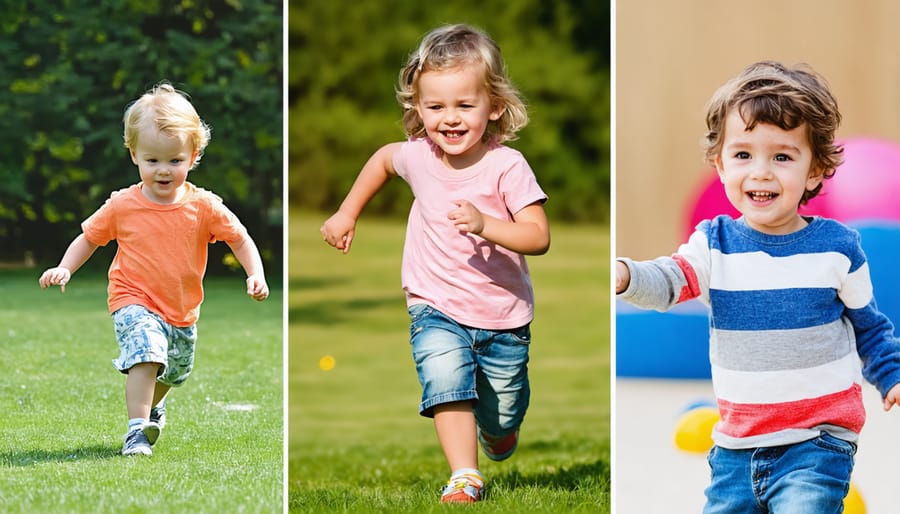
Different Types of Play and Their Brain Benefits
Physical Play and Motor Development
Physical activity during play does more than just burn energy – it’s a crucial catalyst for brain development. When children engage in activities like climbing, running, or throwing balls, their motor cortex lights up with activity, strengthening neural pathways essential for motor skill development.
Dr. Sarah Martinez, a pediatric neurologist, explains: “Every time a child attempts a new physical challenge during play, their brain creates and reinforces connections that improve coordination, balance, and spatial awareness. It’s like building a sophisticated highway system in the brain.”
Simple activities like crawling through tunnels, dancing to music, or playing catch help children develop both fine and gross motor skills while simultaneously engaging multiple brain regions. This cross-brain activation creates a rich learning environment that supports overall development.
Parents can support this growth by providing diverse opportunities for physical play. Whether it’s playground time, dance parties, or obstacle courses, each activity contributes to building stronger neural connections and better body awareness. Remember, unstructured physical play is just as valuable as organized sports or activities.
Social Play and Emotional Intelligence
Through social play, children naturally develop crucial emotional and social skills that shape their future relationships. When children engage in imaginative play with peers, their brains actively work on developing emotional intelligence and understanding others’ perspectives. Dr. Sarah Chen, a child development specialist, explains that during play, children’s brains release oxytocin – often called the “bonding hormone” – which helps them form meaningful connections with playmates.
Play provides a safe space for children to practice reading facial expressions, understanding body language, and managing complex emotions. Whether they’re taking turns with toys or resolving conflicts in make-believe scenarios, children learn valuable lessons about empathy and cooperation. These experiences create neural pathways that help them navigate social situations throughout their lives.
A mother recently shared how her shy four-year-old transformed after regular playgroup sessions: “Through play, my daughter learned to express her feelings better and became more confident in group settings. It’s amazing to see how natural this learning process is for children.”
Remember, every giggle, shared toy, and resolved conflict during playtime contributes to your child’s emotional growth and social understanding.
Imaginative Play and Cognitive Growth
When children engage in imaginative play, their brains light up with activity, creating new neural pathways that enhance problem-solving abilities and creative thinking. A child pretending to be a doctor treating their stuffed animals isn’t just playing – they’re actively developing cognitive flexibility and emotional understanding.
Dr. Sarah Thompson, a pediatric neurologist, explains, “During pretend play, children are literally rewiring their brains. They’re creating scenarios, solving problems, and learning to think abstractly – all crucial skills for later life.”
This type of play activates multiple brain regions simultaneously. When a child transforms a cardboard box into a spaceship, they’re exercising their visualization skills, spatial awareness, and creative problem-solving abilities. They learn to think outside the box (quite literally!) and develop innovative solutions to challenges they encounter.
Research shows that children who engage regularly in imaginative play tend to demonstrate stronger creative thinking skills and better problem-solving abilities in later years. They’re more adaptable in new situations and show greater cognitive flexibility when faced with challenges.
Parents can support this development by providing open-ended toys and materials, allowing unstructured play time, and participating in their child’s imaginary scenarios when invited.
Age-Specific Play Benefits
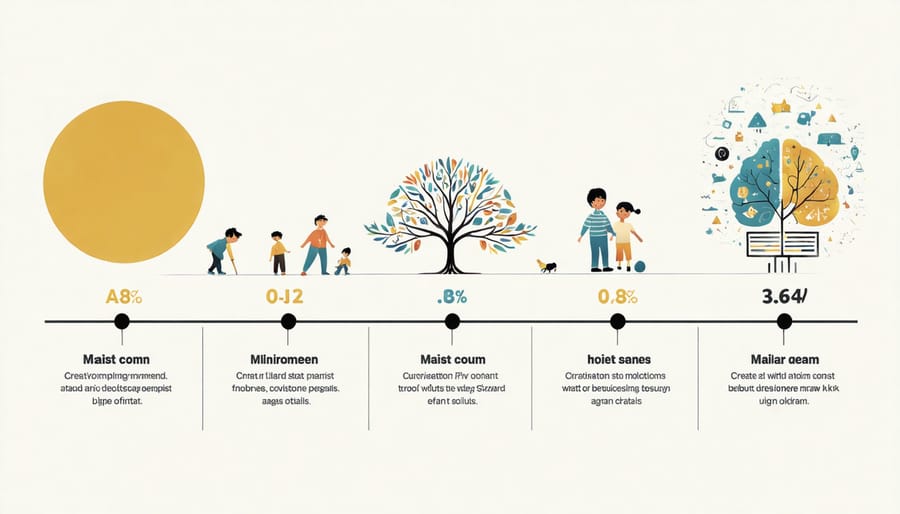
Early Years (0-3)
During the first three years of life, a child’s brain undergoes remarkable growth and development through play-based experiences. These early years represent one of the most critical stages of brain development, where every playful interaction helps form millions of neural connections.
When babies engage in simple games like peek-a-boo, their brains are actually hard at work, developing crucial emotional and cognitive pathways. Dr. Sarah Chen, a pediatric neurologist, explains, “Even something as simple as a baby shaking a rattle is strengthening their understanding of cause and effect while building motor skills and spatial awareness.”
During tummy time, crawling adventures, and object exploration, infants are developing their sensory systems and laying the groundwork for future learning. Each time a toddler stacks blocks or plays with shape sorters, they’re strengthening neural pathways related to problem-solving and spatial reasoning.
Social play, such as gentle tickling games with caregivers or early parallel play with other children, helps develop the social brain circuits that will support emotional intelligence and relationship building. The key is providing a safe, nurturing environment where babies and toddlers can freely explore through play.
Remember, every child develops at their own pace, and the best play experiences are those that follow the child’s natural interests and curiosity.
Preschool and Beyond
As children enter preschool age and beyond, their play becomes increasingly sophisticated, mirroring their developing cognitive abilities. Dr. Sarah Chen, a developmental neuroscientist, explains, “During these years, we see remarkable growth in the prefrontal cortex, which supports complex problem-solving and social understanding. Play activities naturally evolve to nurture these developing skills.”
Children begin engaging in more structured games with rules, cooperative play, and imaginative scenarios that require advanced planning. These activities strengthen neural pathways associated with executive function, including impulse control, working memory, and cognitive flexibility. A fascinating study from the University of Minnesota found that children who regularly engaged in complex pretend play showed stronger development in areas of the brain associated with narrative thinking and social cognition.
“My 5-year-old daughter used to play simple dress-up games, but now she creates elaborate stories with her friends, complete with character backgrounds and plot twists,” shares Maria Rodriguez, a preschool teacher. “It’s amazing to watch their minds work together.”
During this period, play also becomes more social, helping develop the brain’s emotion regulation centers. Activities like team sports, group projects, and dramatic play scenarios create opportunities for children to practice empathy, negotiation, and conflict resolution – all while their brains are actively forming crucial social-emotional neural connections.
To support this development, parents and educators can provide varied play opportunities that challenge children’s growing capabilities while remaining enjoyable and engaging.
Supporting Healthy Brain Development Through Play
Supporting your child’s brain development through play doesn’t require expensive toys or elaborate setups. In fact, the most beneficial play experiences often come from simple, everyday activities that encourage exploration and interaction.
One of the most effective ways to enhance play is through active participation. When you join your child in their play, you’re not just having fun together – you’re helping build neural connections that support social and emotional development. Try getting down on their level, following their lead, and showing genuine interest in their imaginative worlds.
Create an environment rich in sensory experiences. Simple materials like sand, water, play dough, and building blocks provide excellent opportunities for tactile exploration. These hands-on experiences help develop fine motor skills while strengthening neural pathways related to spatial awareness and problem-solving.
Dr. Sarah Thompson, a pediatric neurologist, shares: “Open-ended play materials are like nutrition for the developing brain. When children have the freedom to explore and create without predetermined outcomes, they’re actually building the foundation for executive function skills.”
Consider these brain-boosting play activities:
– Engage in pretend play scenarios that encourage storytelling and role-playing
– Practice movement games that combine physical activity with cognitive challenges
– Introduce simple musical instruments or rhythm activities
– Create art projects that allow for free expression
– Play games that involve taking turns and following rules
Remember to provide unstructured play time too. While guided activities are valuable, children also need the freedom to direct their own play experiences. This independence helps develop creativity, decision-making skills, and self-regulation.
Most importantly, maintain a supportive and patient attitude during play. Avoid rushing or correcting your child too often. The goal is to create a safe, nurturing environment where they feel confident to explore, make mistakes, and learn naturally through their play experiences.
The fascinating journey through the neuroscience of play reveals just how crucial playful activities are for healthy brain development. From strengthening neural connections to fostering emotional regulation, play serves as a fundamental building block for lifelong learning and well-being. As we’ve explored, both free play and structured activities contribute uniquely to cognitive development, social skills, and emotional intelligence.
Remember that every moment of play is an opportunity for growth. Whether it’s building with blocks, engaging in pretend play, or running around outdoors, these activities are literally shaping your child’s brain. The evidence is clear: play isn’t just fun – it’s essential for healthy development.
As parents and caregivers, we can support this natural learning process by creating safe, enriching environments for play and participating when invited. Don’t feel pressured to structure every moment; sometimes, the best thing we can do is step back and let natural curiosity lead the way.
The message from neuroscience is encouraging: by supporting play-based learning, we’re not just entertaining our children – we’re helping them build stronger, more resilient brains. So next time you see children deeply engaged in play, remember that you’re witnessing the remarkable process of brain development in action. Let’s continue to champion play as the powerful developmental tool it truly is.

